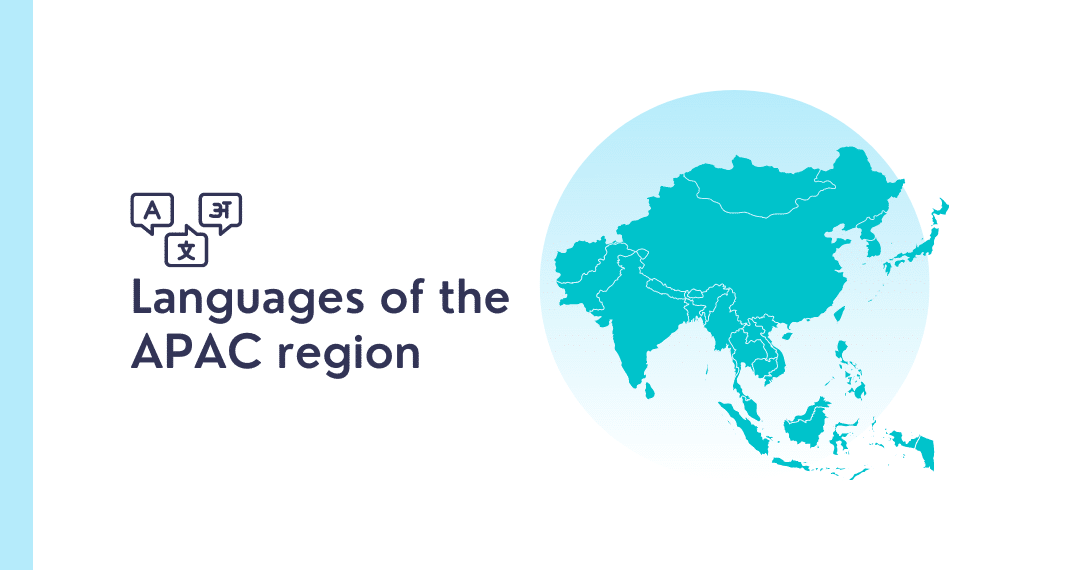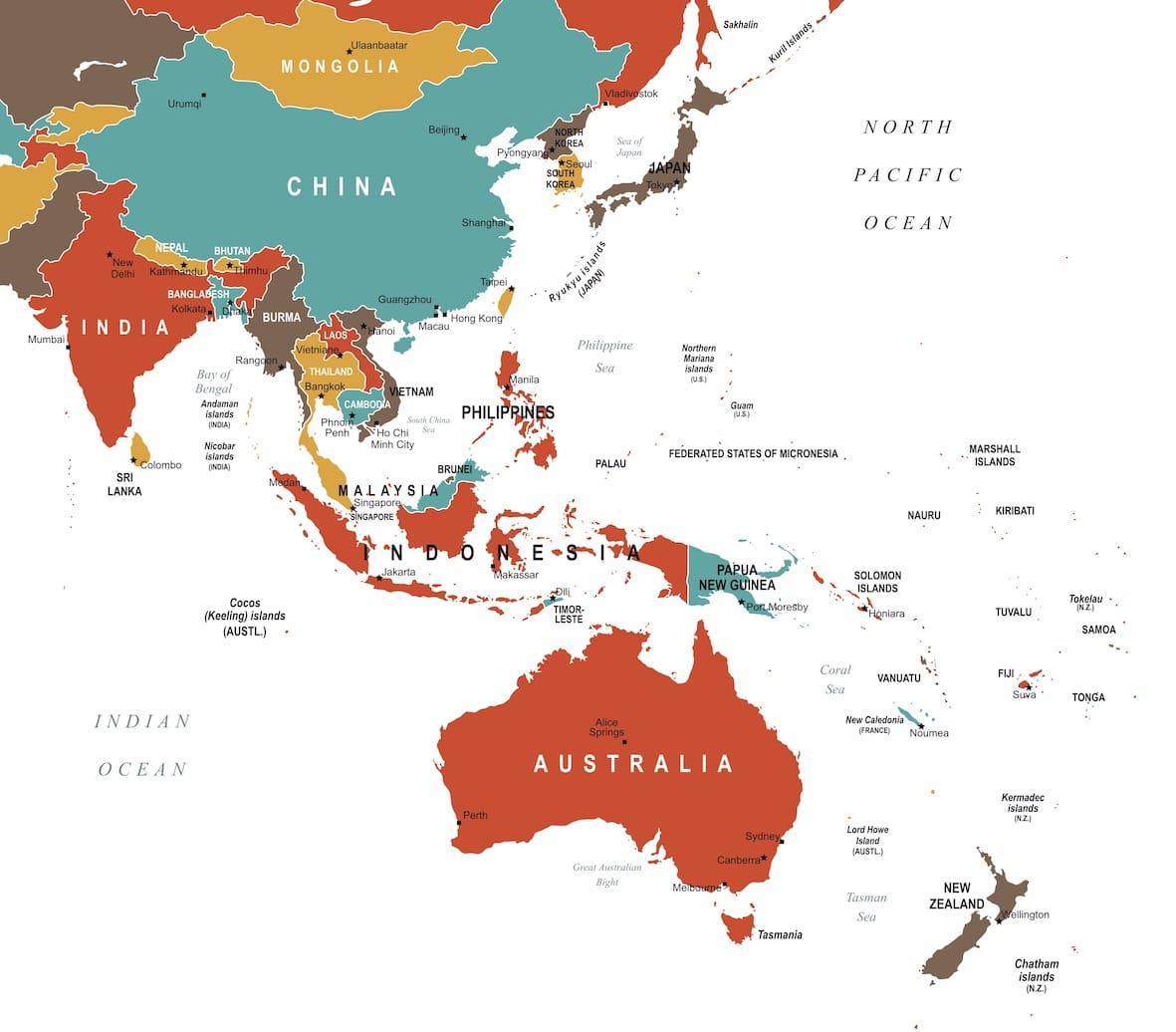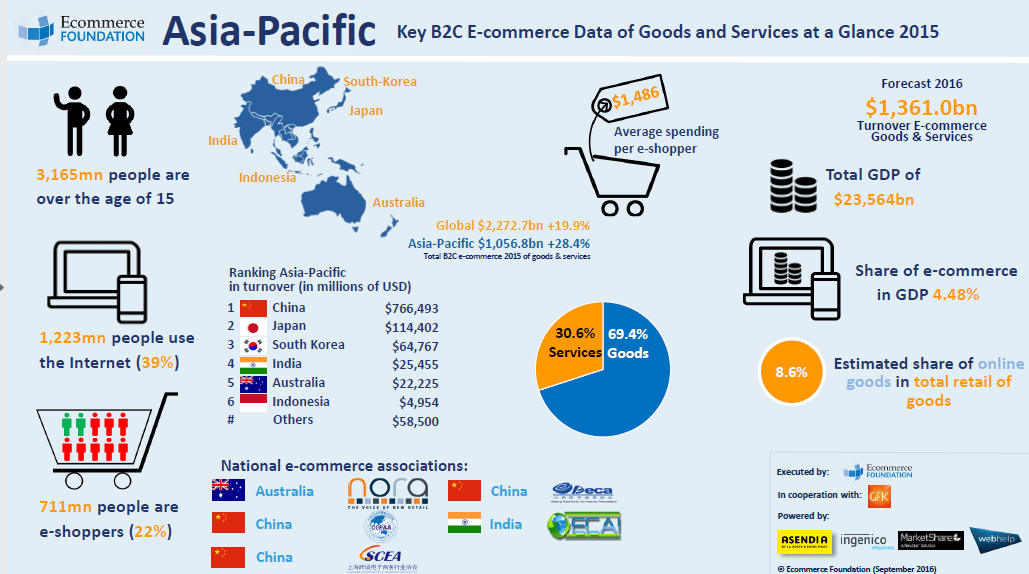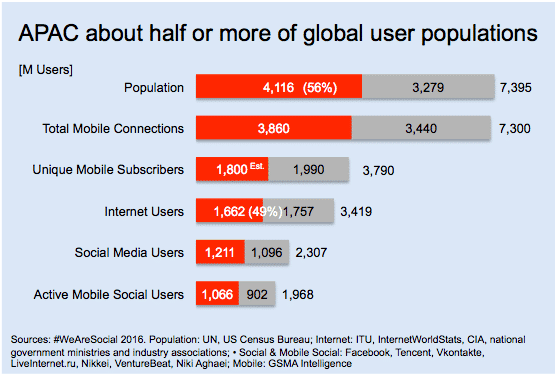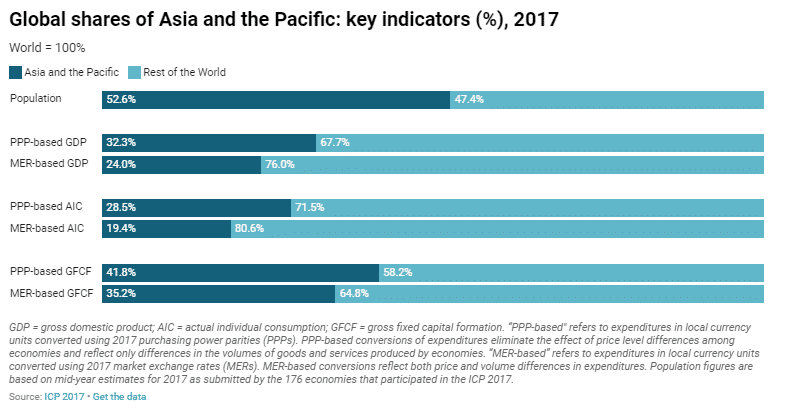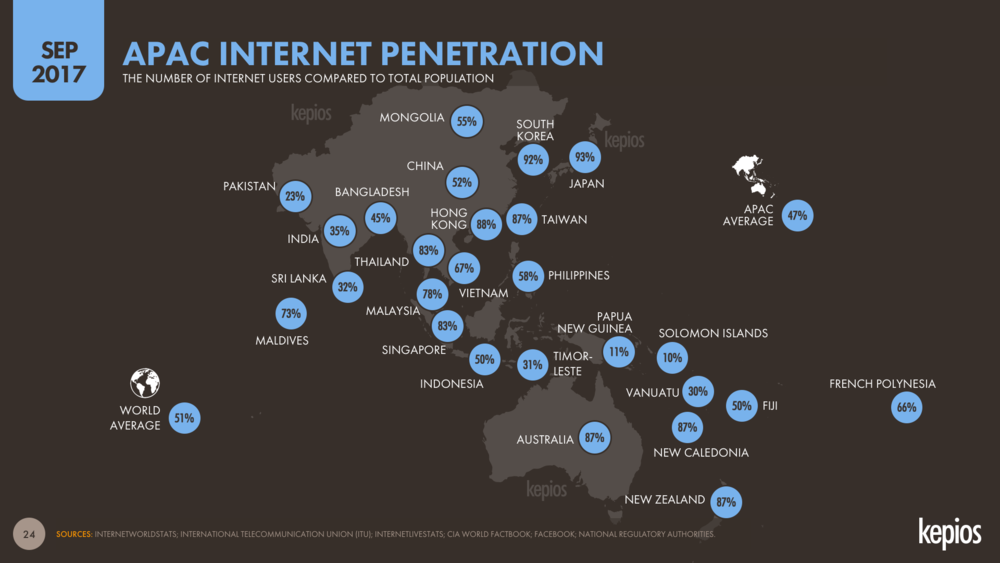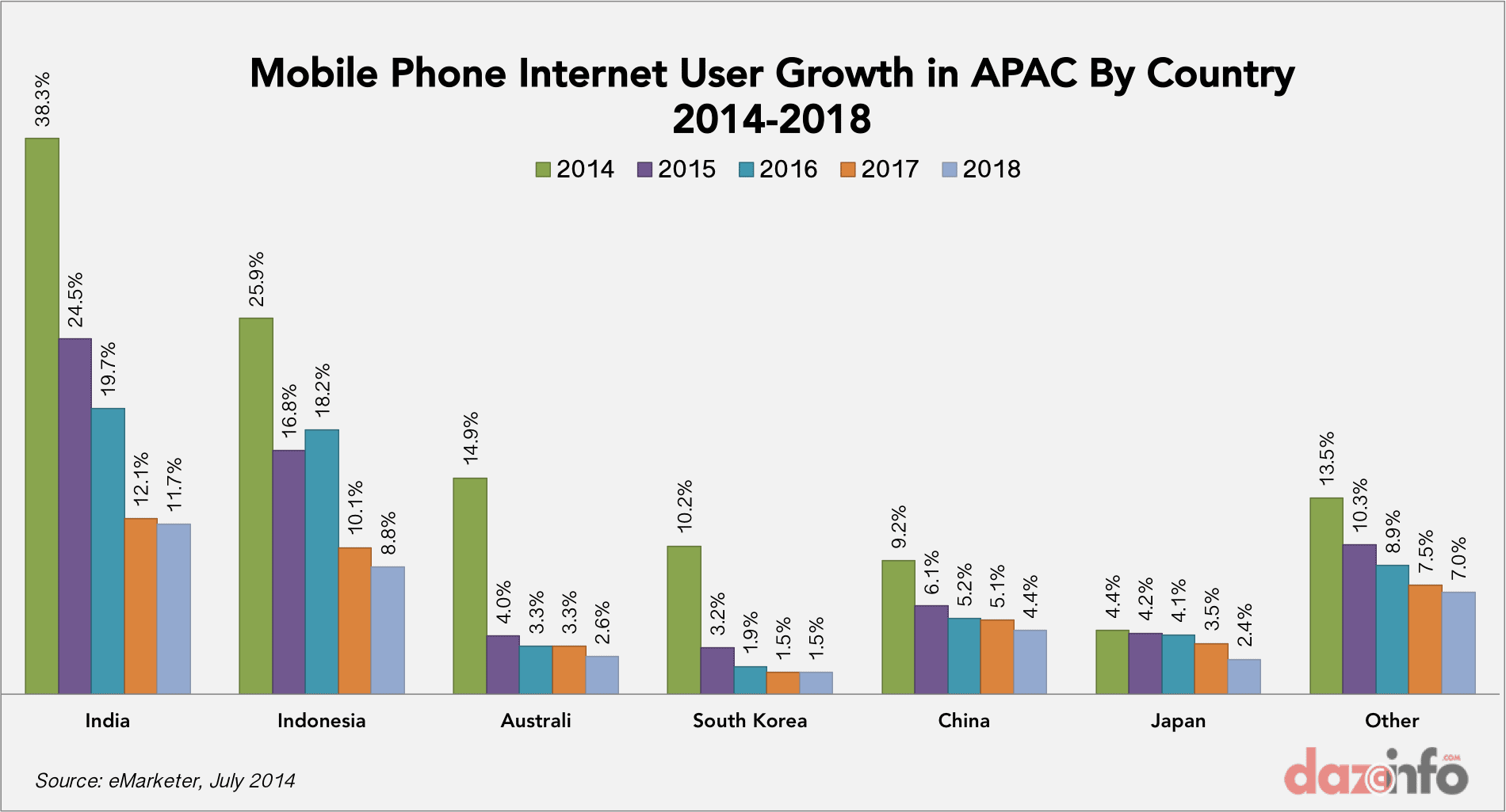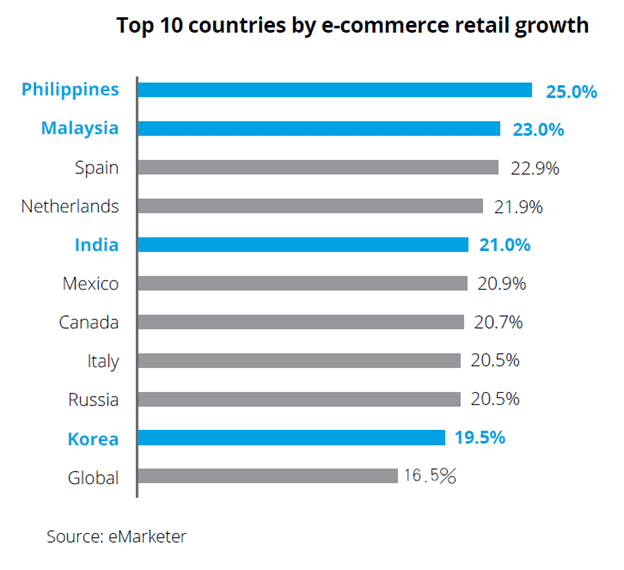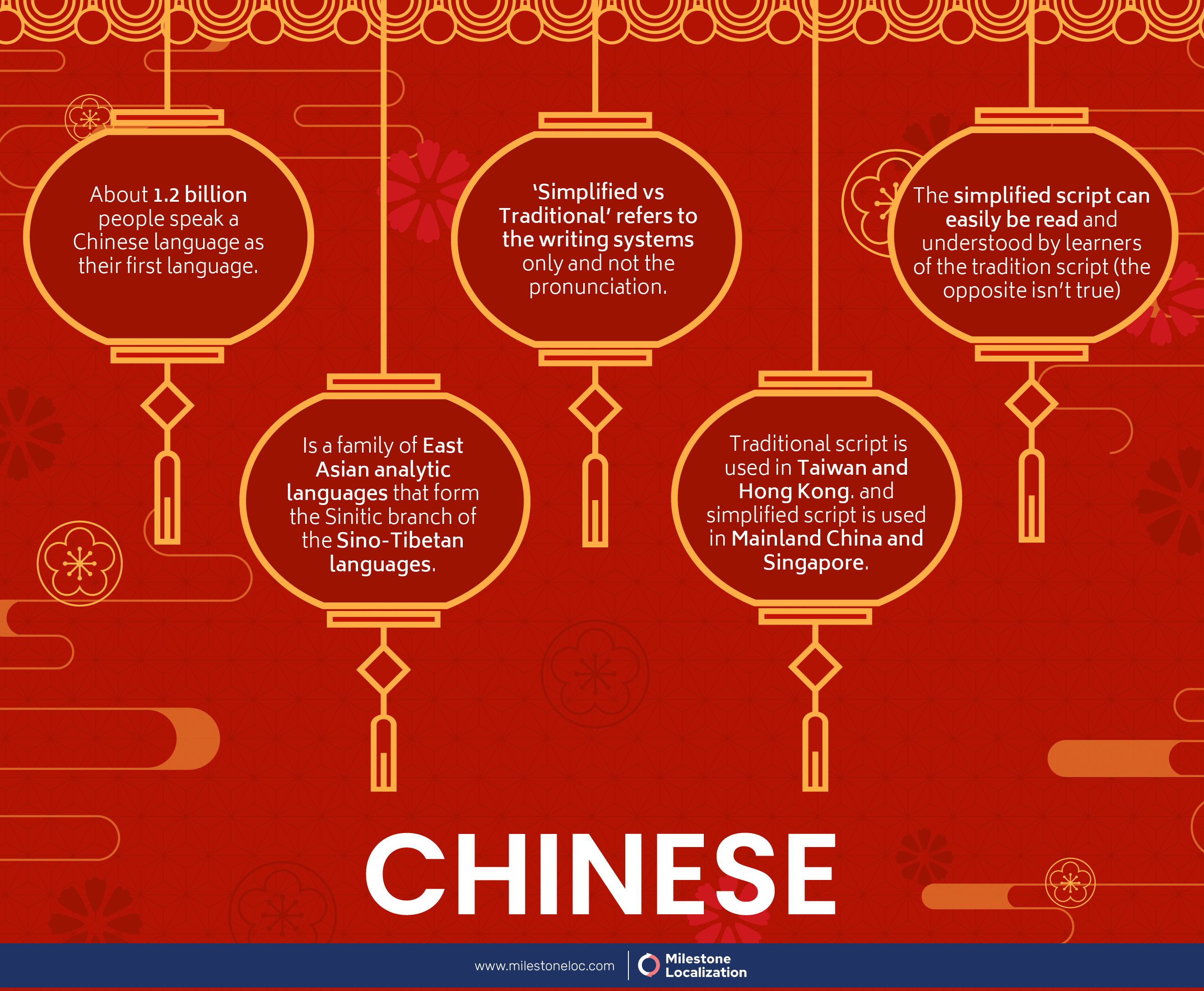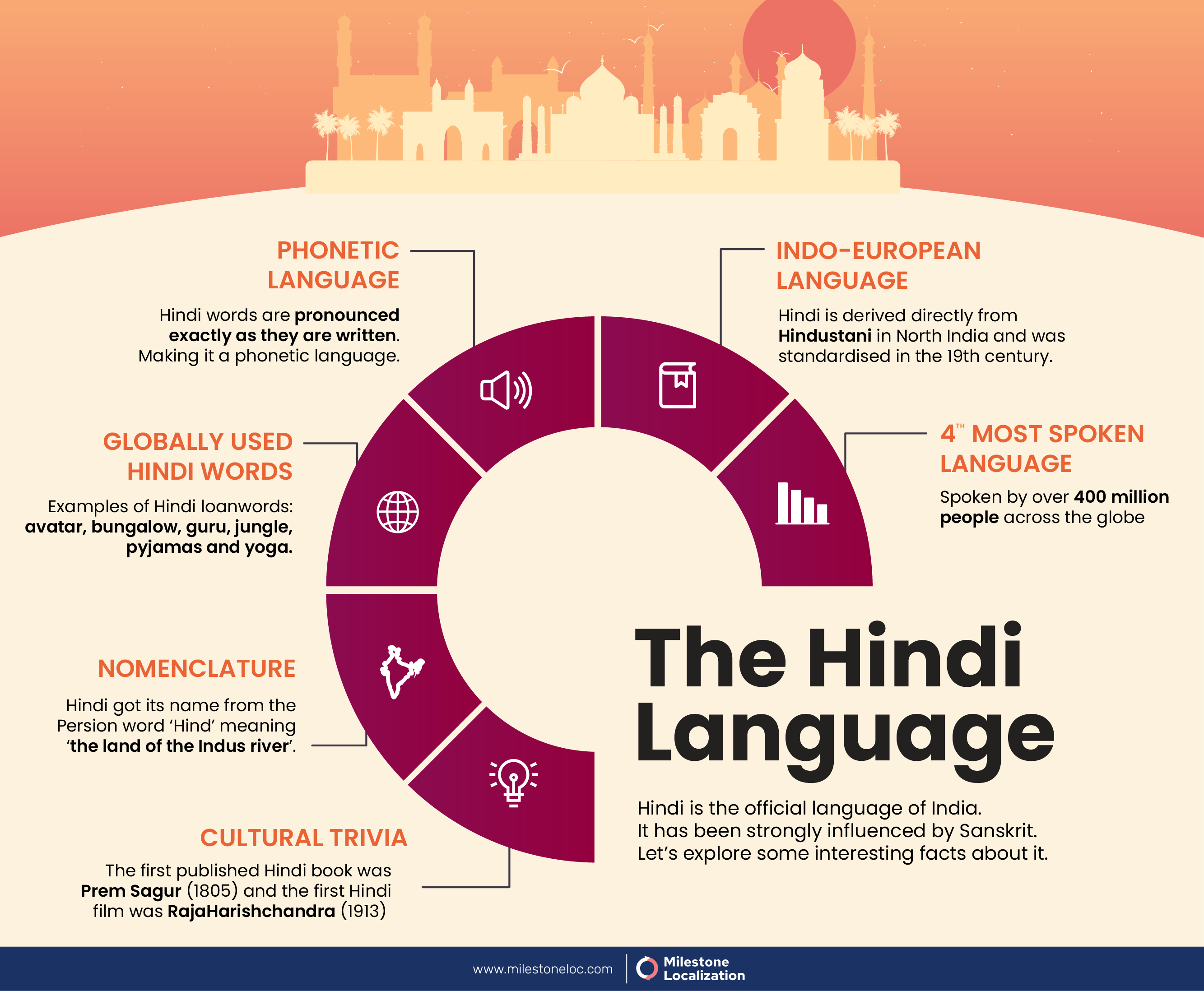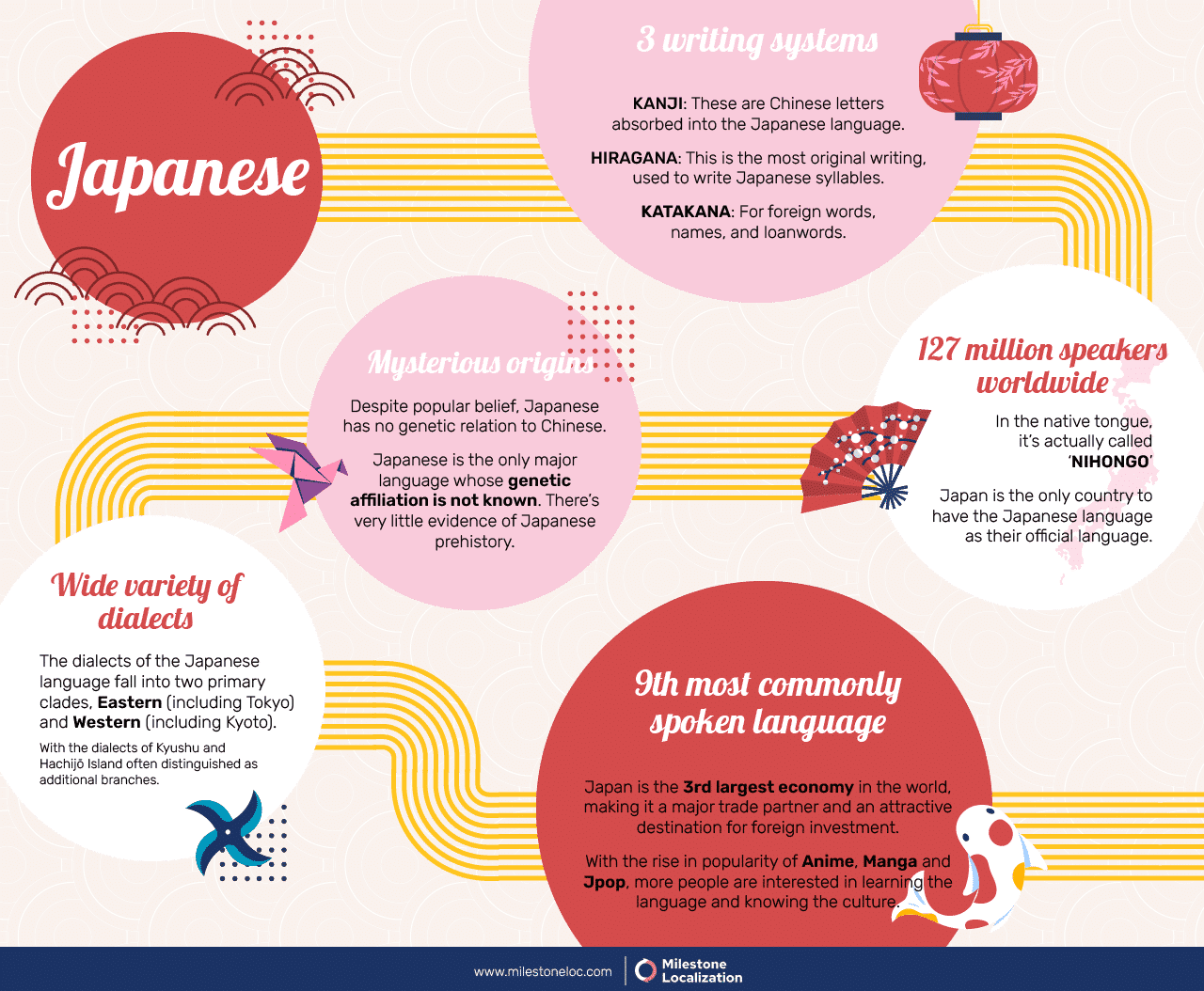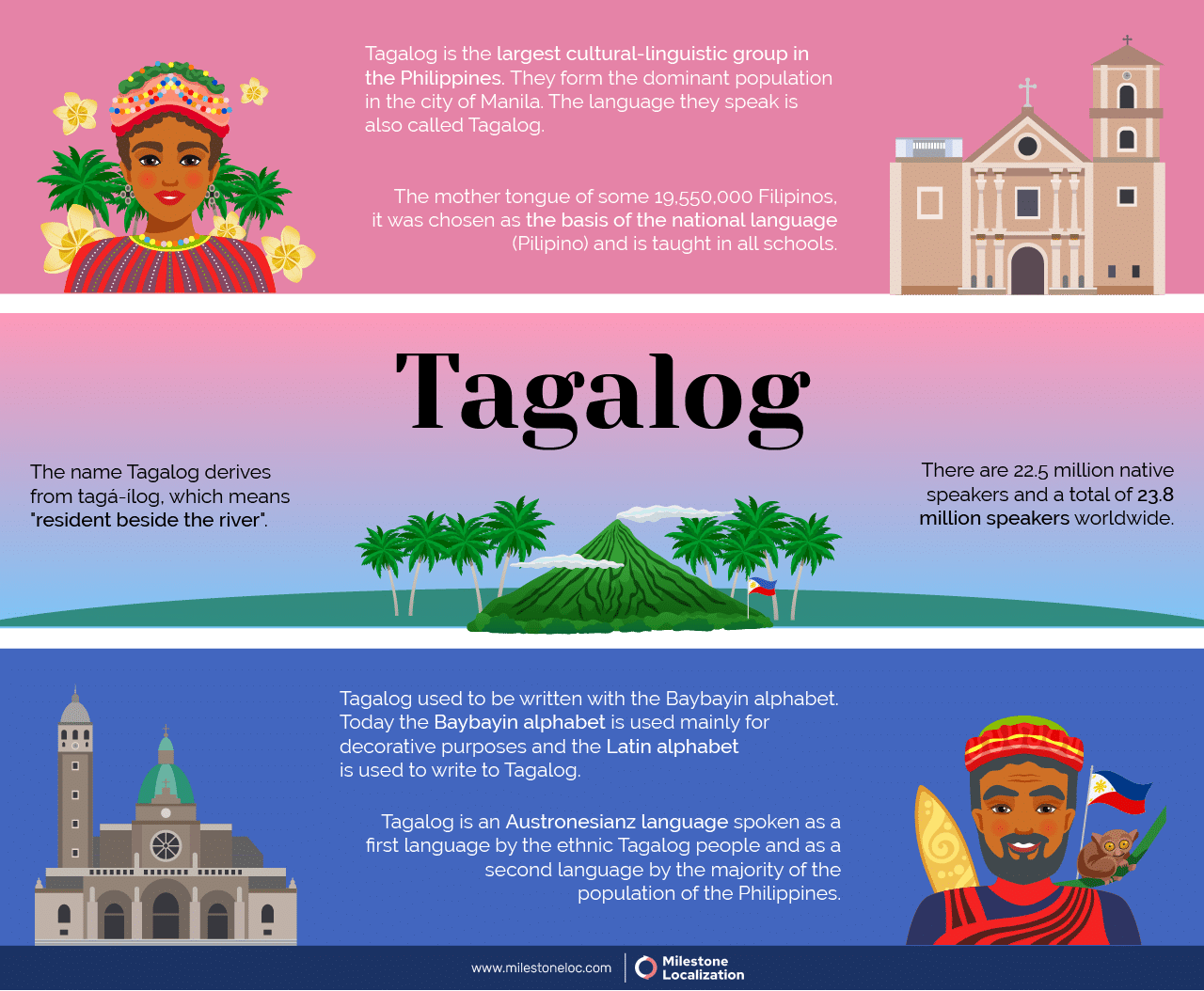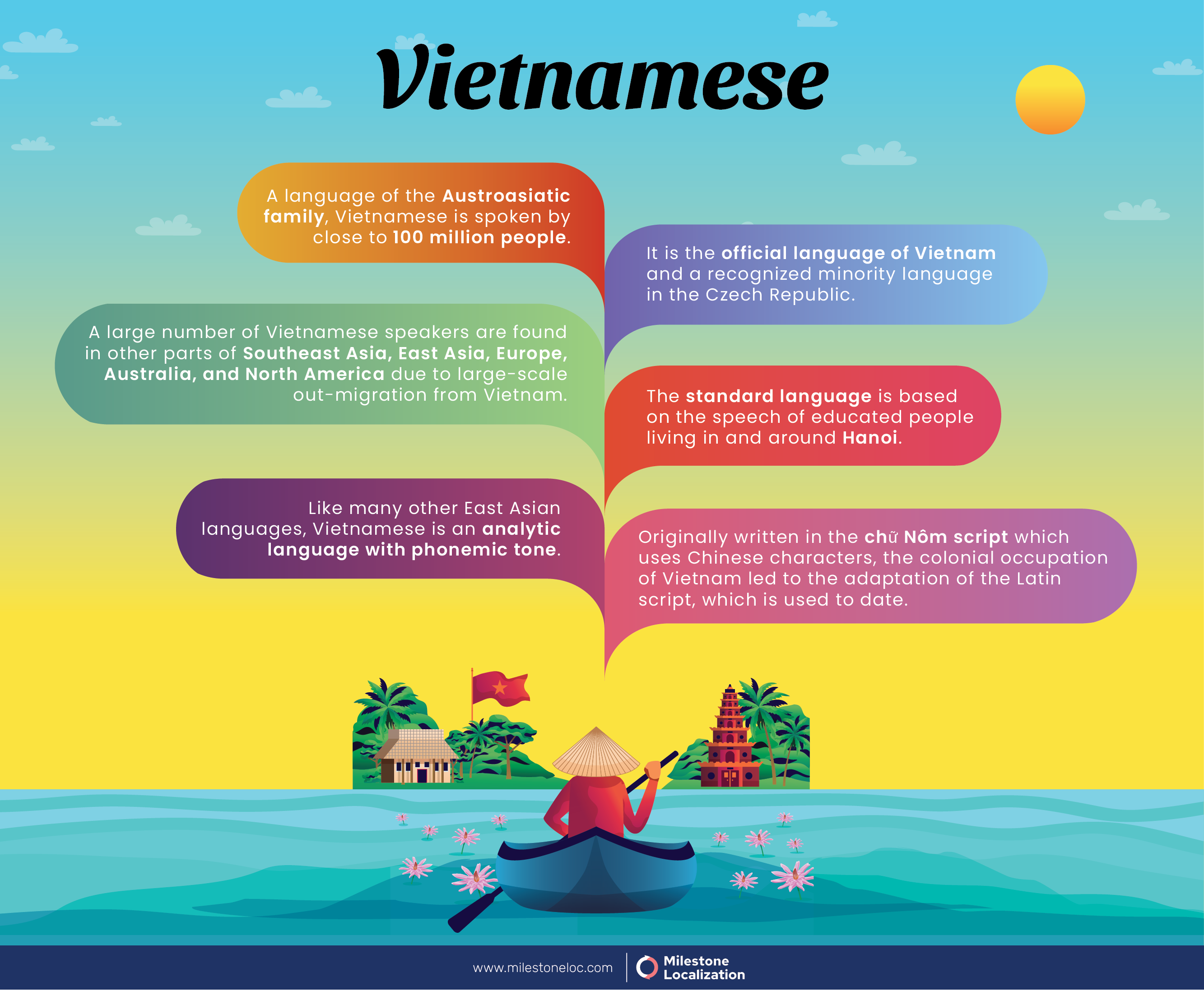The APAC region covers an incredibly diverse and unique group of countries that represents a microcosm of the global economy.
On one hand, the APAC region includes some of the biggest, most populous economies such as China and India. On the other, countries such as Fiji and the Maldives represent small island economies. At the same time, Vietnam is a developing landlocked economy.
What’s more, the countries of this region range from lower-middle income to high-income economies.
This variety, in turn, offers businesses an amazing opportunity to expand to new and diverse markets.
Still, one should keep in mind that this region is home to several cultures, religions and languages. This diversity can pose a significant challenge when it comes to localizing successfully.
With the right strategy in mind, however, any brand can offer its unique products and services to the APAC region’s growing economies.
In order to devise the right strategy, you need to be well-acquainted with this incredibly diverse region. In the following blog, we have all the information you need to know about the APAC region and the languages of APAC.
Keep reading and by the end of this blog, you will be able to devise your own strategy to conquer the APAC region through the languages of APAC!
What is APAC? Which regions does it include?
Asia-Pacific, or APAC, is a region located near the western Pacific Ocean. Generally, the Asia-Pacific region includes East Asia, South Asia, Southeast Asia, Russian Far East, Australasia and the Pacific Islands.
However, there is no clear-cut definition of the countries that this region includes. For instance, while countries from North and South America may be included, APAC mainly consists of all countries from Asia and Australasia. Western and Central Asia are rarely included.
Also read: Languages Spoken In Texas & Its Bilingual Education System
You might even stumble upon the abbreviation APEJ which stands for ‘Asia-Pacific excluding Japan.’
The term APAC has been coined in the 1980s and since then is widely used in the commerce, politics and finance sphere. The APAC region is composed of quite a heterogeneous group of countries.
Yet, what brings them together in this union is the fact that most of these countries are emerging markets and as such are currently experiencing rapid economic growth.
APAC is a unique region due to its vast territory. More than 23 countries are part of this region and on its territory, there are more than 3,000 languages spoken.
Also read: Languages of East Asia [Complete Guide]
Biggest countries/economies in APAC
In terms of share of global PPP-based GDP, three economies in the Asia-Pacific region are among the largest in the world: China (18.8%), India (7.3%), and Indonesia (2.49%) ranking first, third, and seventh, respectively in the world.
Also read: Doing Business in China: The Cultural Differences You Need to Know
Together, these countries account for up to 80% of the region’s economy and nearly 26% of the global economy. In contrast, the smallest economies in the region are Bhutan, Maldives and Fiji. Each accounts for less than 0.01% of the global economy.
Overall, the region’s PPP-based GDP per capita was estimated at $10,210, about 38% lower than the world average of $16,596.
Singapore is the fourth-richest country in the world with a PPP-based GDP per capita of $116,486, while Brunei Darussalam ($74,953) is currently the eleventh richest.
Also read: Languages spoken in Singapore [Updated 2022]
Eight economies in the region have a PPP-based GDP per capita above the world average. These are Thailand, Maldives, Malaysia, Taiwan, China, Brunei Darussalam, Hong Kong SAR and Singapore.
How important is the APAC region?
The Asia-Pacific region is home to over half of the world’s population. What’s more, the APAC region has one of the fastest-growing digital user bases in the world. China alone has gained over 35 million new internet users in just this past year.
Also read: ICF Translation: Importance, Requirements & Best Practices
Indeed, East Asia has the highest percentage of Internet users in the world (24%), while South Asia comes in a close second with 17%. Interestingly, more developed regions such as the Americas and Western Europe account for a significantly smaller number of internet users, 7% and 4% respectively.
The good news is that this trend is not expected to slow down and internet users are expected to continue to grow steadily.
A study by DataReportal for Hootsuite and WeAreSocial compared overall internet growth rankings year-over-year. The final report revealed that the APAC region delivered an incredible growth in internet use year over year — a rate that has held steady since the late 2010s.
This surge in internet users has a positive effect on e-commerce. A significant rise in spending is a sign that APAC users are spending more time online to research, discover and purchase new products and services.
In 2021, China contributed to more than half of the world’s e-commerce retail sales, with the sales value surpassing the combined total of both Europe and the US. Currently, China has the largest online buyer population worldwide, amounting to over 780 million people.
Euromonitor International predicts that this e-commerce boom will continue to grow, with retail e-commerce sales doubling by 2025.
Top 9 languages of APAC
Mandarin
Mandarin is the official language of China, Singapore and Taiwan. Mandarin is the most spoken language in Asia, with over 1.1 billion speakers.
It belongs to the Sino-Tibetan family of languages and thus, is related to Cantonese, Burmese and Tibetan. Its characters stem from an ancient pictorial system in which a symbol stands for every word.
Mandarin is also widely spoken in places like Malaysia, Macau and Hong Kong.
Hindi
Hindi is one of the most widely spoken Asian languages, and its various dialects are spoken across Northern and Central India.
Hindi is the official language of India and belongs to the Indo-Aryan family. There are over 342 million Hindi speakers.
Hindi uses the Devanagari script, which in turn has been strongly influenced by Sanskrit, an old Indo-Aryan language, dating back to 1500 BCE.
Bangla
Bangla, also known as Bengali, is the second most widely spoken language in India after Hindi. It is extensively used in several East Indian states such as Tripura, Assam and West Bengal. Bengali is an official language in Bangladesh as well.
Bangla has its roots in the Indo-Aryan language family and is closely related to other Indian languages. There are more than 300 million native Bangla speakers in the world.
The Bangla script is called “Bangla bornomala” and is often referred to as Bengali-Assamese script. It is one of the world’s most widely used writing systems.
Also read: 10 Interesting Facts About The Bengali Language
Indonesian
Indonesian is spoken by 300 million speakers. Indonesian is the official language of Indonesia. It is also officially taught at schools, universities and other institutions around the world, especially in Australia, Japan, South Korea, Vietnam, and Taiwan.
Interestingly, Indonesian is considered a standardized variety of Malay, which has been used as a lingua franca in the multilingual Indonesian archipelago for centuries.
Indonesia is the fourth most populous nation in the world and has over 275 million inhabitants—the majority of which speak Indonesian, making it one of the most widely spoken languages in the world.
Japanese
Japanese is natively spoken by less than 130 million people. This is the official language of Japan but is also extensively spoken in the Philippines, China and Taiwan.
Japanese belongs to the Japonic or Japanese-Ryukyuan language family. Little is known about the Japanese language’s prehistory and when it first appeared in Japan.
The Japanese writing system combines Chinese characters, known as kanji, and two unique syllabaries, known as moraic scripts. These syllabaries are derived from the more complex Chinese characters: hiragana, meaning ‘simple characters’ and katakana, meaning ‘partial characters’.
Interestingly, the Latin script is also used on rare occasions for imported acronyms.
Tagalog
Tagalog is part of the Austronesian language and is mainly spoken by the ethnic Tagalog people, who make up a quarter of the population of the Philippines. Tagalog’s standardized form, officially named Filipino, is the national language of the Philippines.
Today, there are about 82 million Tagalog native speakers.
Tagalog uses the Latin alphabet. Prior to the arrival of the Spanish in 1521, however, Tagalog was written in abugida—or alphasyllabary—called Baybayin.
Malay
Malay is the official language of Singapore, Indonesia, Brunei, and Malaysia. What’s more, Malay is even spoken in Thailand and the Philippines.
There are over 77 million Malay speakers in the APAC region.
It is a language of the Austronesian family and is related to Tagalog and Javanese. It is often described as the easiest Asian language to learn.
Vietnamese
Vietnamese is an Austroasiatic language originating from Vietnam. It is the national and official language of Vietnam but is also spoken in parts of Southeast Asia, East Asia, North America, Europe, and Australia.
Vietnamese is spoken natively by over 76 million people, which is several times more than the rest of the Austroasiatic family combined.
A Romanization of Vietnamese was codified in the 17th century, but it wasn’t until the 20th century that the Romanized script became predominantly used.
This period coincides with the times when education in Vietnam became widespread. The new, simplified writing system was found to be more efficient when teaching and communicating with the general Vietnamese population.
Tamil
Tamil is a classical Dravidian language which is natively spoken by the Tamil people, living on the Indian subcontinent. Tamil is an official language of the Indian state of Tamil Nadu, Sri Lanka and Singapore.
There are 75 million native Tamil speakers. Due to contact with European languages in more recent times, certain changes appeared in the written and spoken Tamil. For example, modern Tamil uses European-style punctuation.
Also read: Most Spoken Languages of South Asia
Grow your business in APAC with language translation
We provide professional translation and localization services in Chinese, Japanese, Hindi and 70+ languages.
Role/importance of English in the APAC region
English is without a doubt the most important language for intercultural communication among the languages of APAC. While English is the primary language of several countries in the region, it also serves as the lingua franca for business, science, technology, the media and international organizations.
Depending on their use of English, we can divide the APAC countries into three groups – English as a native language (ENL), English as a second language (ESL) and English as a foreign language (EFL).
In ENL countries, English is the native language of the population. In the APAC region, this is the case for Australia and New Zealand where English is the primary language and is used in all social contexts – at home, at school, at work, in the media and by the government.
Also read: What are the Fastest Growing Languages?
In India, Singapore, the Philippines, Hong Kong, and Malaysia, most of the population speaks languages other than English; thus, these are ESL countries.
Despite the various languages of APAC, still, English is taught as a second or third language at schools and is often the main means of communication in most business and higher education institutions. English is often used by the government as well.
What’s more, in ESL countries of the APAC region, English serves as a lingua franca among speakers of different languages.
In most ESL countries in the APAC region, an interesting linguistic shift is taking place. The role of English is shifting from a second language to a first language. In other words, many people start to use English as a means of communication at home instead of the native, local languages of APAC.
In most of the remaining countries of the APAC region, English does not have any major function and, thus, is a foreign language (EFL). While English is taught at schools, it is rarely a medium of instruction and is rarely used by the business, media and the government.
Still, due to the close relations between the countries in the APAC region and the huge linguistic difference, English remains the only medium for external communication and therefore is of great importance to the region.
Which languages of APAC should your business focus on when expanding to APAC?
The languages of APAC are diverse. Sometimes speakers of different dialects of the same language might not be able to understand each other.
A typical example in this regard is the Chinese language which includes several dialects such as Mandarin, Wu, Gan, Xiang, Min, Cantonese, Hakka, Jin, Hui, and Pinghua. Surprisingly, these dialects have a very low degree of mutual intelligibility, which makes communication oftentimes impossible.
While the importance of English is constantly growing, and it is currently the most common means of external and, in some cases, internal communication, there is a long way to go until English is widely spoken by the majority of the population of the APAC countries.
However, English is widely spoken in only a few countries in the APAC region, such as India, Singapore, Australia, and New Zealand. In the rest of the region, English is used only on rare occasions.
Countries such as Sri Lanka, Nepal, Indonesia, and Mongolia have very low English proficiency. Thailand and Myanmar are among the countries with the lowest English proficiency in the world!
Thus, if you want to expand to the APAC region, you have to take a more local approach and communicate in the native languages of APAC. Indeed, localization is the best way to reach these rapidly developing markets.
Deciding which countries and locales to focus on will help you choose the suitable languages to reach the most customers.
Also read: Top 10 Translation Companies in India
The rapid economic growth of the APAC region makes it an appealing prospect for any company that wants to go global. However, not being familiar with the cultural diversity and languages of APAC might be a stumbling stone along the way.
Thus, being well-acquainted with the market and the linguistic landscape will help you make the most out of this growing market. Working with professional translation service providers will help you communicate in the languages of APAC and gain a strong cultural understanding of this vast and unique region.
Once you are well-acquainted with the local audience, you can focus on reaping all the benefits of the fastest-growing economies in the world located in the APAC region.
Grow your business in APAC with language translation
We provide professional translation and localization services in Chinese, Japanese, Hindi and 70+ languages.

